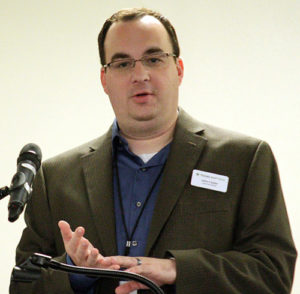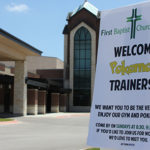WACO—Rather than be alarmed by discussions about active shooters or other unexpected events, most congregants will find comfort in knowing church leaders have a plan to provide for their safety, speakers told a Texas Baptist workshop on church security.
“Shepherds stay alert. Churches need calm assurance from leaders that reasonable steps are being taken,” said David Adams, director of church administration and special projects for the Baptist General Convention of Texas.
Organizers of the BGCT annual meeting in Waco added the workshop on church safety and security to the schedule after the mass shooting at First Baptist Church in Sutherland Springs.
Develop a church emergency operations plan
A near-capacity crowd gathered to learn the basic steps to develop a church emergency operations plan. They also heard about liability and legal issues from attorney John Litzler, director of the church law division at San Antonio-based Christian Unity Ministries.

Rather than simply adopt a plan another church created, Adams emphasized the importance of putting together a broad-based team to develop an emergency operations plan tailored to a specific congregation.
“It needs to be a process. The team should include leaders from a variety of ministries,” he said, noting representatives from preschool and children’s ministries will have distinctive perspectives, as will members who work with senior adult ministries.
Church members with expertise and experience in emergency response—such as law enforcement officers and other public safety officials—should be included. The church’s insurance agent also can be a valuable resource in terms of risk-management issues, he noted.
Build relationships with public safety officers
After utilizing insider expertise, congregations also should seek outside assistance—particularly from the local public safety officers.
“Police and fire departments usually are available to do free assessments,” Litzler said. “They want you to communicate ahead of time.”
Sign up for our weekly edition and get all our headlines in your inbox on Thursdays
Local public safety agencies benefit from having a blueprint of the church facility on file, as well as the names and contact information for key church leaders in times of emergency, he added.
Adams emphasized the importance of developing ongoing relationships with first-responders before an emergency occurs.
In addition to officer-appreciation events, churches may invite local police, sheriff’s departments or fire departments to use their facilities for training events, he noted. Those occasions not only create goodwill, but also enable first-responders to become familiar with church facilities, he added.
Once a team puts together an emergency operations plan, it needs to be communicated in a simple and understandable manner to church members, he said.
“Put it in writing,” Adams said. “Write it clearly and concisely.”
High-level training should be required for all church staff, and that expectation should be included in personnel policies, he noted. Various levels of training should be provided on a regular basis for different groups of volunteers, such as greeters, ushers and deacons.
“Training is essential,” Adams said. “You have to keep it fresh for folks; otherwise, they will forget it.”
The plan should evaluated frequently and updated as necessary, he emphasized.
“It should be consistently used and reviewed—not sit on a shelf,” Adams said
Dealing with an active shooter
In light of the tragedy at Sutherland Springs, workshop leaders dealt with the issue of an active shooter, defined as “an individual actively engaged in killing or attempting to kill people in a confined and populated area.”

Between 2000 and 2013, houses of worship accounted for less than 4 percent of all active shooter situations, while commerce and education together accounted for 70 percent.
In the event of an active shooter situation, most experts recommend three response strategies—run, hide and fight, in that order, Adams said.
“There is no one demographic profile of an active shooter,” he said. “However, many shooters exhibit observable pre-attack behaviors.”
Ministers who are aware of issues involving church members, such as custody disputes or marital conflict, should trust their instincts and be vigilant, he noted.
Without betraying any confidential information, he added, ministers should encourage members to follow the same advice at church they hear from the Department of Homeland Security: “If you see something, say something.”
In light of changes to Texas law in recent years, congregations have a responsibility to decide whether guns are permitted on church premises, Litzler emphasized.
“Churches are no longer automatic gun-free zones,” he said. “Churches should adopt a policy regarding open and concealed carry of handguns. Not choosing is making a choice.”
Churches have a legal responsibility to plan for unexpected events, he asserted.
“Churches can be liable for their action or inaction they take in an emergency situation,” he said. “Just because the church didn’t create the initial emergency, that doesn’t mean it can’t be a contributing cause to the harm.”
For more information
- How to develop an emergency operations plan for a church, click here.
- Regarding volunteer private security for churches, click here.
- How to develop a policy regarding guns inside church facilities, click here.
- Additional safety and security resources, including preparedness training for active shooter situations, click here.














We seek to connect God’s story and God’s people around the world. To learn more about God’s story, click here.
Send comments and feedback to Eric Black, our editor. For comments to be published, please specify “letter to the editor.” Maximum length for publication is 300 words.